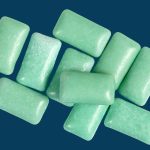Does Adding a Different Fragrance Change My Formulation?
Short answer: Yes — changing a fragrance does change your formulation, and it can significantly impact your product’s regulatory compliance.
This is a common question we receive from clients developing consumer products such as personal care items and cleaning products. Many assume that simply swapping one fragrance for another won’t affect the overall product. However, when you introduce a new fragrance, you’re not just changing the scent, you may be altering the entire chemical formulation, which can trigger regulatory reviews, SDS updates, and the need for new chemical disclosures to remain in compliance with state, federal, or international regulations.
Fragrances are complex mixtures. It’s not uncommon for a single fragrance to contain 20 to 30 individual chemical components. These ingredients, even in small concentrations, can significantly affect how your product is classified, labeled, and disclosed. For example, each ingredient must be evaluated for its inclusion on chemical inventories like the Domestic Substances List (DSL) and Non-Domestic Substances List (NDSL) in Canada, or its TSCA (Toxic Substances Control Act) status in the United States. If even one component is not listed appropriately, your product may fall out of compliance, which can restrict your ability to market or distribute it.
In addition to inventory status, it’s essential to assess whether any of the fragrance components are classified as carcinogenic, mutagenic, or toxic to reproduction (commonly referred to as CMRs). If any of these substances are present at concentrations above 0.1%, this must be reflected in your product’s Safety Data Sheet (SDS) and may affect labeling and hazard classification. Overlooking this detail can lead to inaccurate SDS content and potential legal or regulatory issues.
State regulations also play a crucial role—particularly in California. The fragrance supplier’s SDS should be reviewed to determine whether any components are listed under California Proposition 65, which requires warnings on products that contain chemicals known to cause cancer, birth defects, or reproductive harm. Even trace levels of certain substances can require notification and labeling under this law.
Furthermore, if your product is intended for sale in California and falls under the scope of the California Cleaning Product Right to Know Act of 2017 (SB-258), you may be required to publicly disclose all intentionally added ingredients, including those found in fragrances. This includes listing ingredients online and, in some cases, on product labels. It’s also important to understand that under these regulations, relying on the term “fragrance” or citing trade secret protections without proper justification may not be enough—particularly in Canada, where stricter SDS disclosure rules apply. In those cases, the individual CAS numbers of fragrance components may need to be disclosed to remain in full compliance.
The bottom line is this: Changing or adding a fragrance absolutely changes your product’s formulation, and it can have wide-reaching effects on your regulatory requirements, product safety classification, labeling, and SDS content. It’s not just a scent—it’s a chemical mixture that must be evaluated with the same care as any other formulation component.
If you’re unsure how a fragrance substitution might impact your compliance with TSCA, DSL/NDSL, Prop 65, SB-258, or SDS regulations, we’re here to help. Our team has extensive experience supporting companies through formulation updates and can assist you in ensuring that all necessary changes are identified and implemented across your documentation and labeling. Short answer: Yes — changing a fragrance does change your formulation, and it can significantly impact your product’s regulatory compliance.
This is a common question we receive from clients developing consumer products such as personal care items and cleaning products. Many assume that simply swapping one fragrance for another won’t affect the overall product. However, when you introduce a new fragrance, you’re not just changing the scent, you may be altering the entire chemical formulation, which can trigger regulatory reviews, SDS updates, and the need for new chemical disclosures to remain in compliance with state, federal, or international regulations.
Fragrances are complex mixtures. It’s not uncommon for a single fragrance to contain 20 to 30 individual chemical components. These ingredients, even in small concentrations, can significantly affect how your product is classified, labeled, and disclosed. For example, each ingredient must be evaluated for its inclusion on chemical inventories like the Domestic Substances List (DSL) and Non-Domestic Substances List (NDSL) in Canada, or its TSCA (Toxic Substances Control Act) status in the United States. If even one component is not listed appropriately, your product may fall out of compliance, which can restrict your ability to market or distribute it.
In addition to inventory status, it’s essential to assess whether any of the fragrance components are classified as carcinogenic, mutagenic, or toxic to reproduction (commonly referred to as CMRs). If any of these substances are present at concentrations above 0.1%, this must be reflected in your product’s Safety Data Sheet (SDS) and may affect labeling and hazard classification. Overlooking this detail can lead to inaccurate SDS content and potential legal or regulatory issues.
State regulations also play a crucial role—particularly in California. The fragrance supplier’s SDS should be reviewed to determine whether any components are listed under California Proposition 65, which requires warnings on products that contain chemicals known to cause cancer, birth defects, or reproductive harm. Even trace levels of certain substances can require notification and labeling under this law.
Furthermore, if your product is intended for sale in California and falls under the scope of the California Cleaning Product Right to Know Act of 2017 (SB-258), you may be required to publicly disclose all intentionally added ingredients, including those found in fragrances. This includes listing ingredients online and, in some cases, on product labels. It’s also important to understand that under these regulations, relying on the term “fragrance” or citing trade secret protections without proper justification may not be enough—particularly in Canada, where stricter SDS disclosure rules apply. In those cases, the individual CAS numbers of fragrance components may need to be disclosed to remain in full compliance.
The bottom line is this: Changing or adding a fragrance absolutely changes your product’s formulation, and it can have wide-reaching effects on your regulatory requirements, product safety classification, labeling, and SDS content. It’s not just a scent—it’s a chemical mixture that must be evaluated with the same care as any other formulation component.
If you’re unsure how a fragrance substitution might impact your compliance with TSCA, DSL/NDSL, Prop 65, SB-258, or SDS regulations, we’re here to help. Our team has extensive experience supporting companies through formulation updates and can assist you in ensuring that all necessary changes are identified and implemented across your documentation and labeling.
DELL TECH HAS PROVIDED PROFESSIONAL, CONFIDENTIAL CONSULTING SERVICES TO THE SPECIALTY CHEMICAL INDUSTRY IN CANADA, THE USA, EUROPE AND ASIA FOR THE LAST 40 YEARS.





